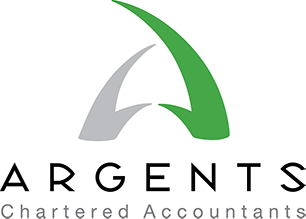Social Care Levy increases N.I Contributions & Dividend Tax Rates - September 9th 2021
The government has announced tax changes to fund £12 billion a year to be spent on the NHS and social care across the UK, of which £600m will be generated by an increase in the dividend tax rate.
The Prime Minister Boris Johnson announced last Tuesday that the proposed increases in National Insurance Contributions and dividend tax would raise £36bn for frontline services in the next three years and be the "biggest catch-up programme in the history of the NHS". He accepted the tax and NIC increases broke a manifesto pledge, but said the global pandemic was in no one's manifesto.
The Prime Minister is thus standing by his statement on entering Downing Street that the Government would address the funding needs of the Social Care system and will adopt many of the measures originally proposed in the Dilnot Commission Report back in 2011.
The can has been metaphorically kicked down the road by previous Governments but the current Government plans to address the issue. Currently, anyone in England with assets over £23,250 must pay for their care in full resulting in many families having to sell the family home to pay care fees. The proposals announced by the Prime Minister will limit the amount that anyone in England will need to spend on their personal care in their lifetime to £86,000 from October 2023.
Also from October 2023, anyone with assets of less than £20,000 will not have to make any contribution for their care from their savings or the value of their home, ensuring those with the least are protected. Anyone with assets of between £20,000 and £100,000 will be eligible for some means-tested support, helping people without substantial assets.
Those above State Pension Age who are earning or self-employed will start paying NIC and the new Health and Social Care Levy from 2023/24.
April 2022
A new social care levy will see the introduction of a 1.25% hike in National Insurance contributions for one year only for employees, employers and the self-employed from April 2022. This will cover both Class 1 (employee and employer), Class 1A and 1B and Class 4 (self-employed) NICs. Those above State Pension Age are not impacted by the April 2022 changes.
April 2023
From April 2023, a new ringfenced Health and Social Care Levy of 1.25% will be introduced which will apply to those who pay Class 1 (employee and employer), Class 1A and 1B and Class 4 (self-employed) NICs and will also be extended to those over State Pension age who are in work. When the new levy comes into effect, National Insurance rates will revert back to current levels.
The levy will also apply to individuals above State Pension age with employment income or profits from self-employment above £9,568.
The levy will be administered by HMRC and collected through the current reporting and collection procedures for NICs – Pay As You Earn and Income Tax Self Assessment.
From 2023-24, levy contributions will need to appear as a separate item on payslips. Where possible a generic message should be included payslips for the next tax year (2022-23). More information on payslip requirements will be available in due course.
Dividend Tax Rate
The government will also increase by 1.25% from April 2022 the rate of income tax which is paid by people who receive dividend income from shares, payable on dividend earnings of above £2,000/yr. Meaning that from April 2022 basic-rate taxpayers will pay 8.75%; higher-rate taxpayers will pay 33.75% and additional-rate taxpayers will be charged 39.35% on this income.
Taxable dividend income excludes dividends earned from investments held in ISAs.
Dividend Tax rates and changes from 2022
| Basic rate taxpayers | Higher rate taxpayers | Additional Rate tax payers | |
| Dividend tax rates 2021/22 | 7.5% | 32.5% | 38.1% |
| Dividend tax rates 2022/23 | 8.75% | 33.75% | 39.35% |
Worked Examples
The rules vary depending on whether you’re employed or self-employed. If you’re employed Employees currently pay Class 1 contributions, which is 12% on pay over £797 per month, or £9,568 per year. Earnings above £50,270 are charged at 2%. Once the tax rates increase is introduced, we assume these rates will rise to 13.25% and 3.25%.
Self Employed
Self-employed workers pay Class 2 and Class 4 contributions on their profits. In 2021-22, that’s £3.05 per week if you earn more than £6,515, which is Class 2, plus a 9% Class 4 contribution on earnings between £9,568-£50,270. Earnings over £50,270 are charged at 2%. If the Class 2 contributions remain at £3.05 per week, we assume the NI rate rise would mean self-employed workers will pay Class 4 contributions of 10.25% and 3.25%.
For more information please visit GOV.UK and search for 'Our Plan for Health and Social Care'.
How the Health and Social care levy will apply from 2022
|
Employee Class 1 NICs Main rate (i) Higher rate (ii) |
Employer Class 1 NICs |
Self Employed Class 4 NICs Main rate (i)/Higher rate (ii) |
|
| NICs rates for 2021/22 | 12% / 2% | 13.8% | 9% / 2% |
| NICs rates for 2022/23 | 13.25% / 3.25% | 15.05% | 10.25% / 3.25% |
|
NICs rates from 2023/24 Health and social care levy from 2023/24 |
12% / 2% 1.25% |
13.8% 1.25% |
9% / 2% 1.25% |
| Threshold at which NICs become payable in 2021/22 | £9,568 | £8,840 | £9,568 |
(i) For the 2021/22 tax year this applies to those who earn £9,568/yr to £50,270/yr (ii) For the tax year this applies to those who earn over £50,270/yr
If you would like to discuss the impact to you or your business, please call us.
